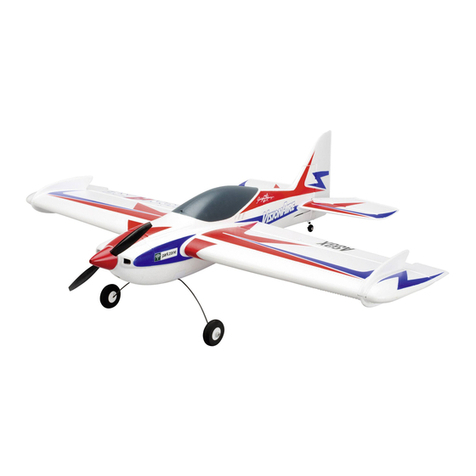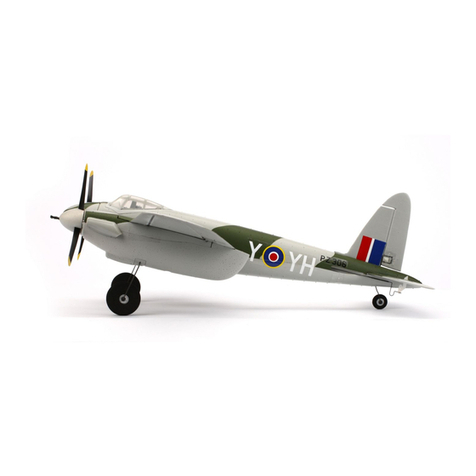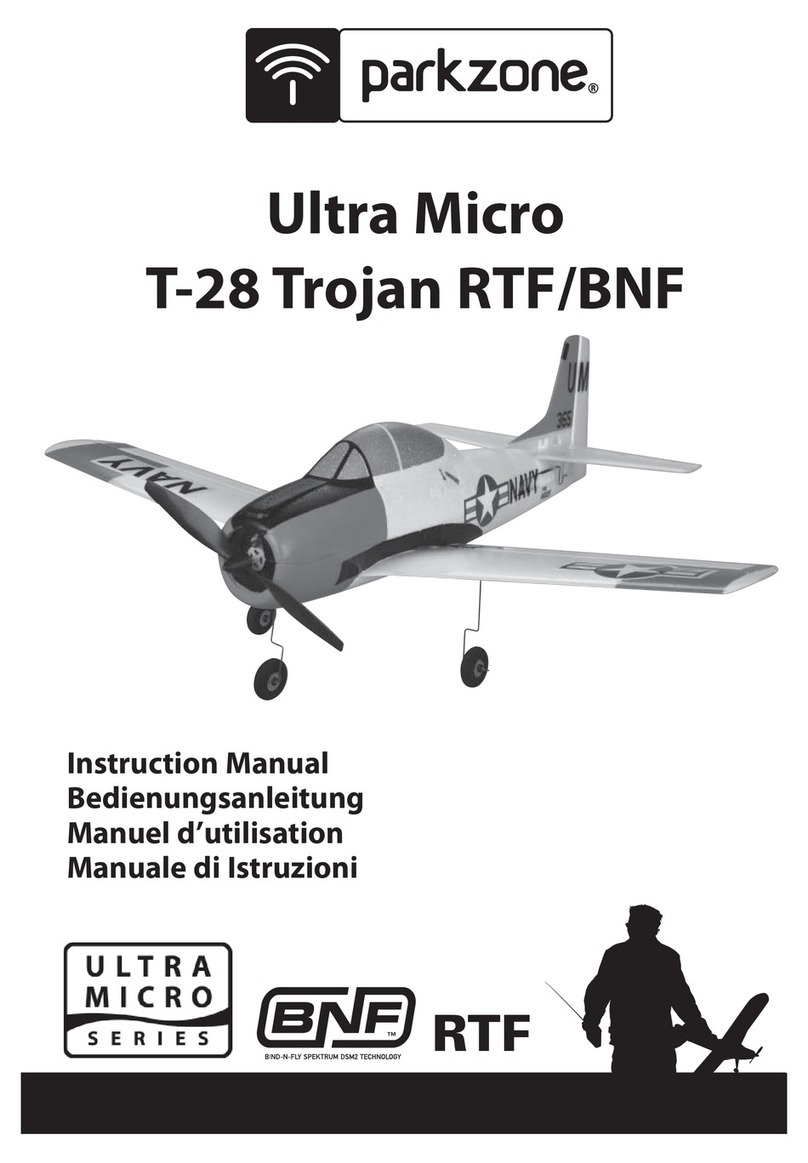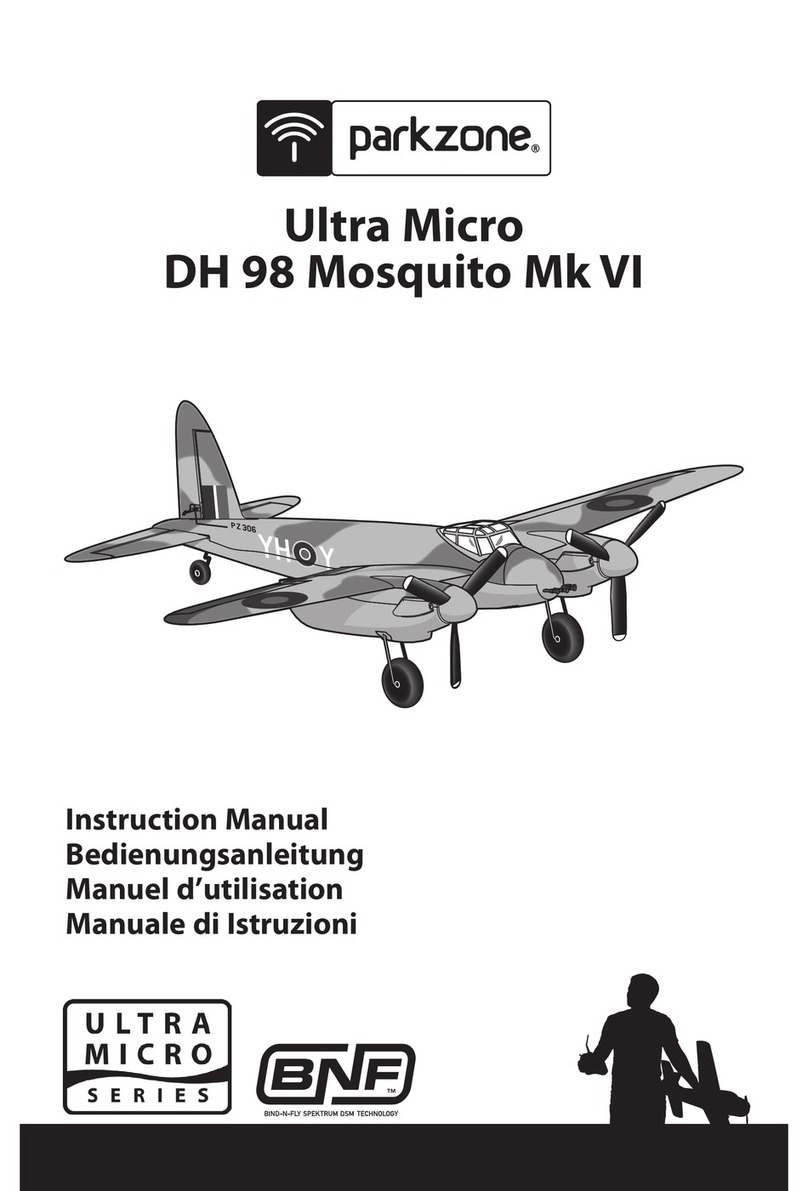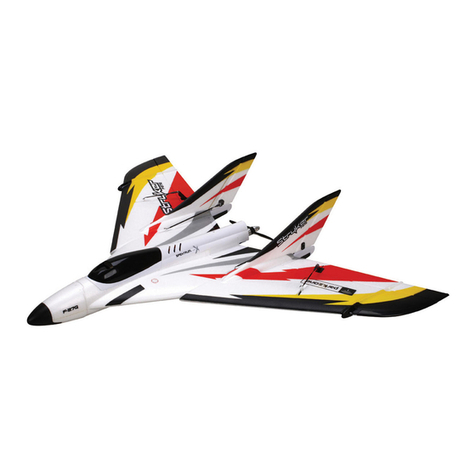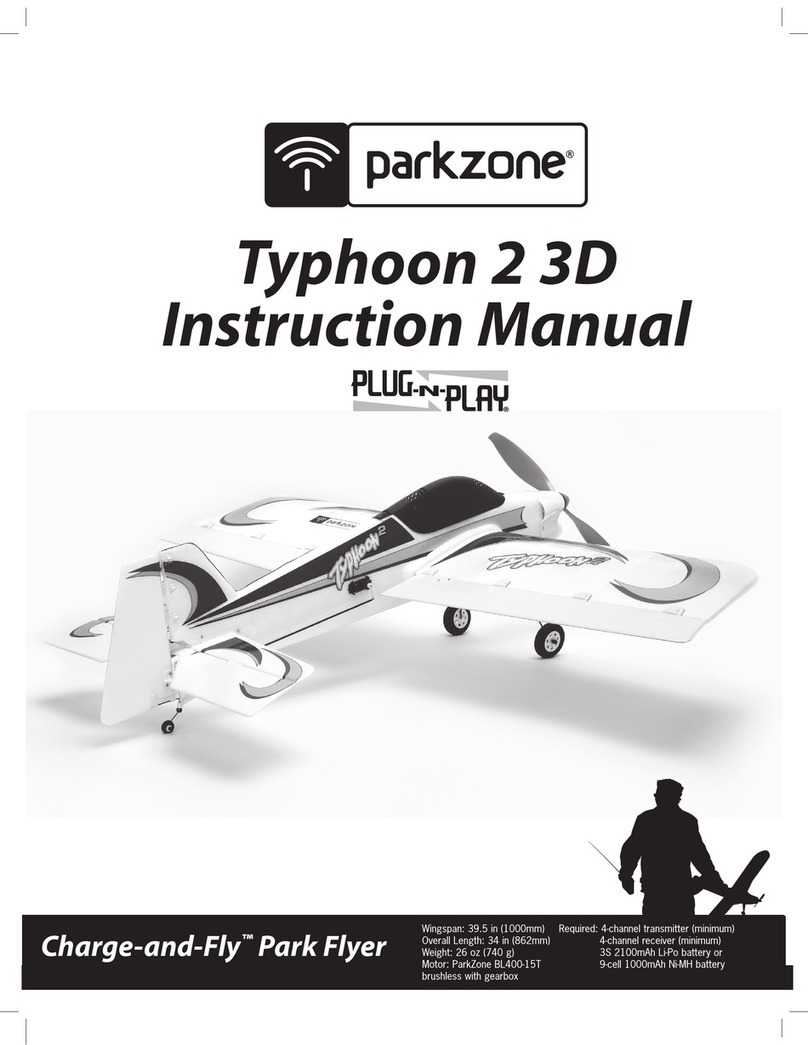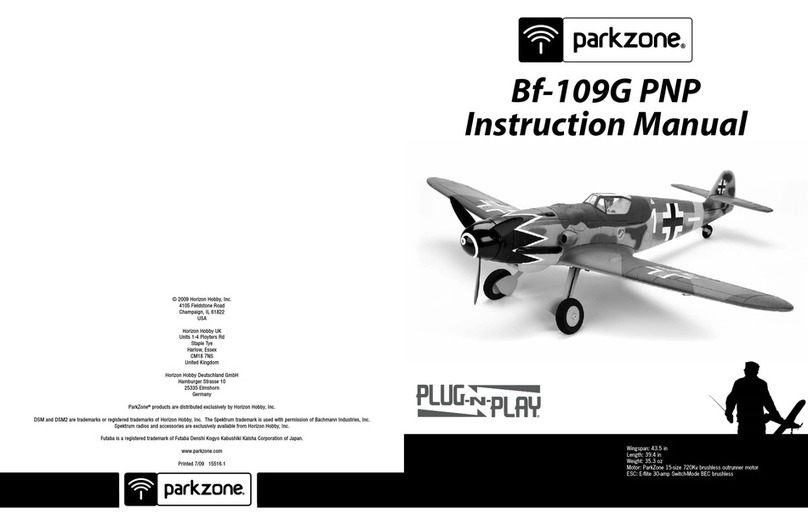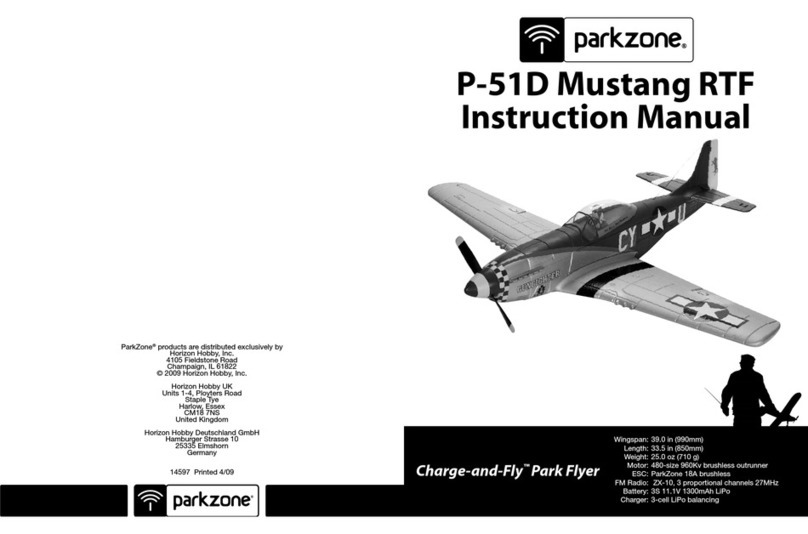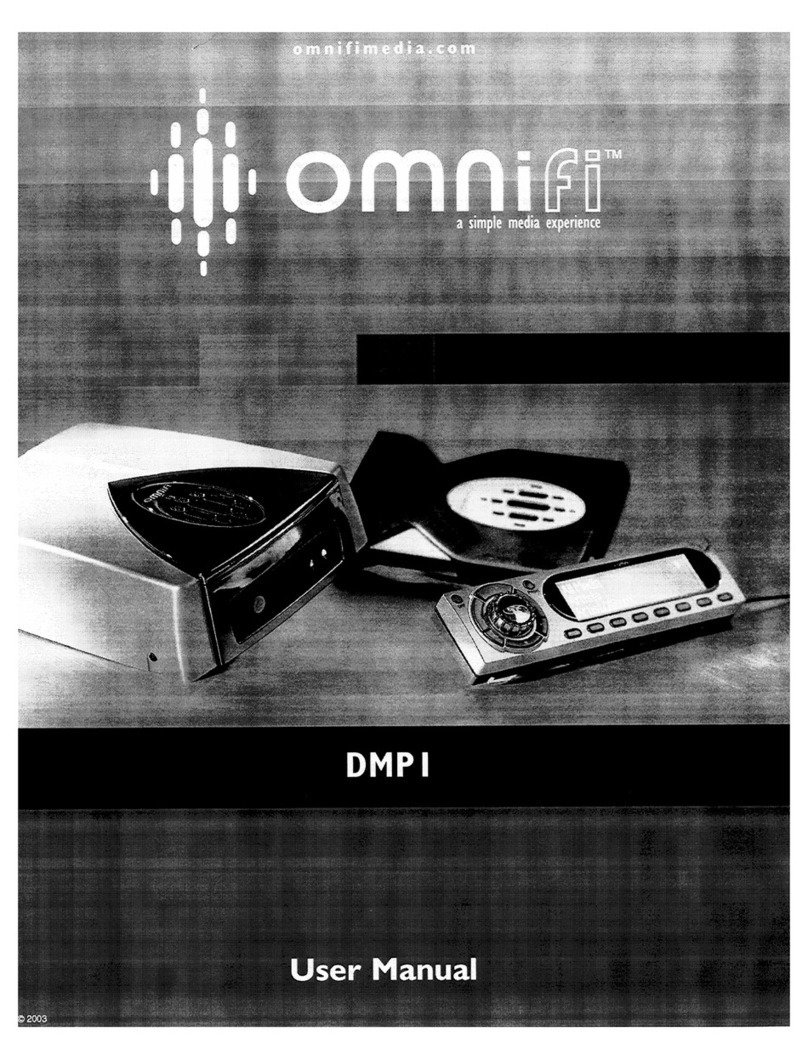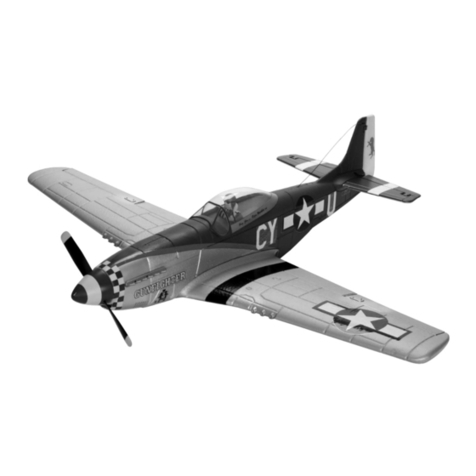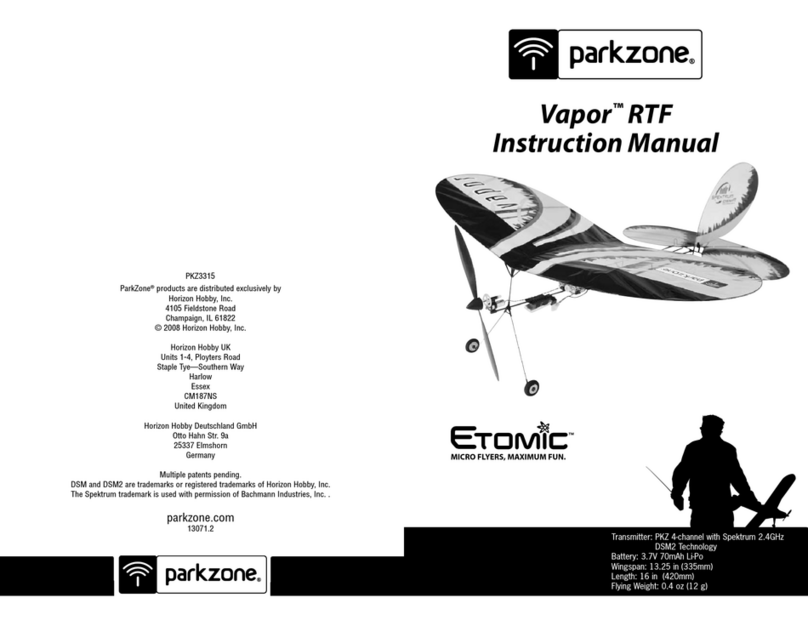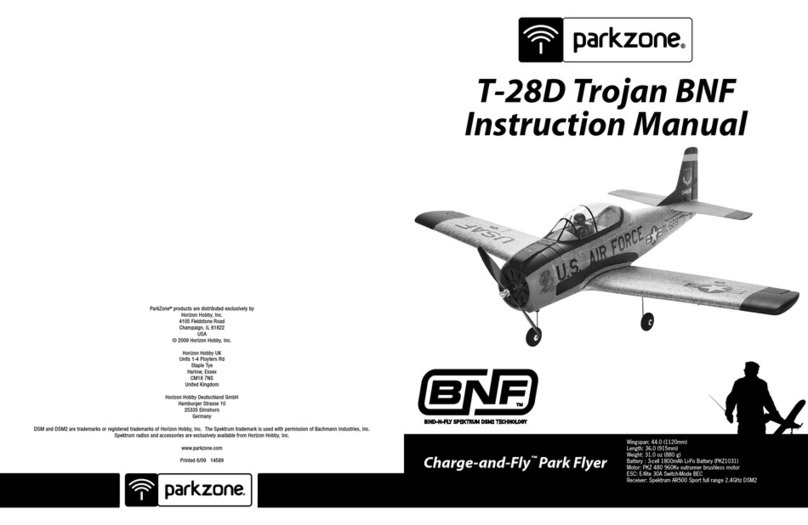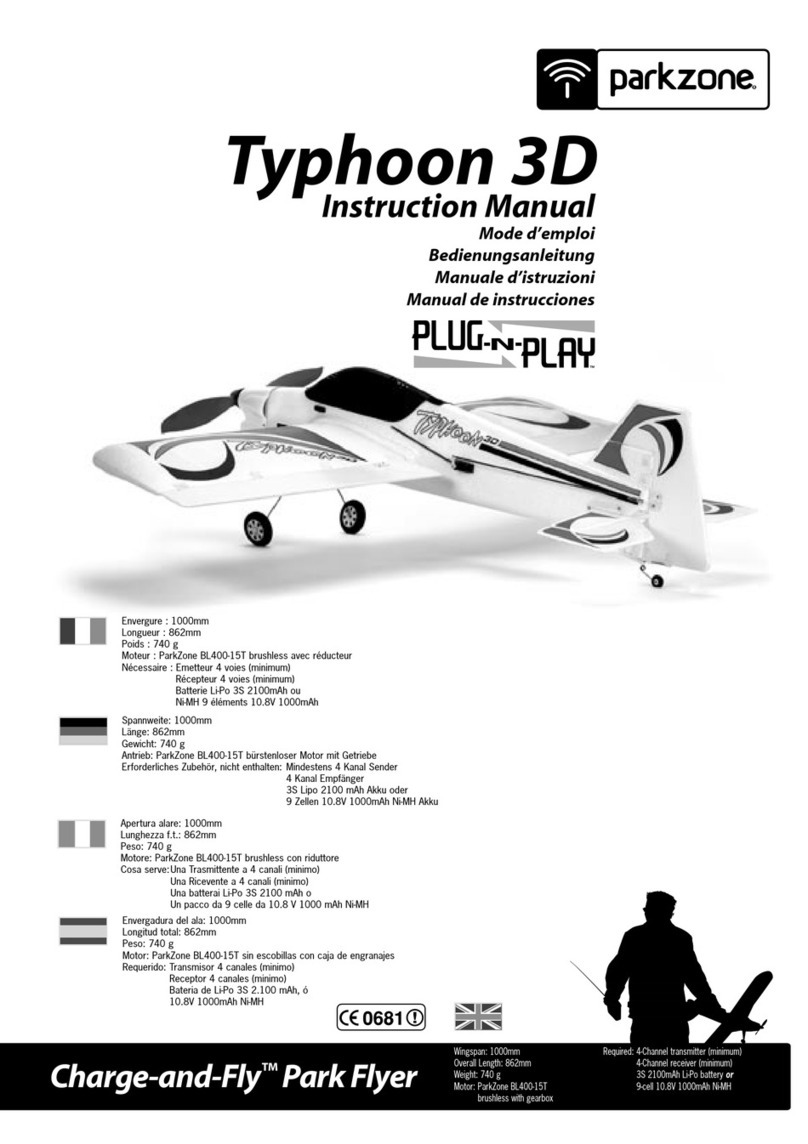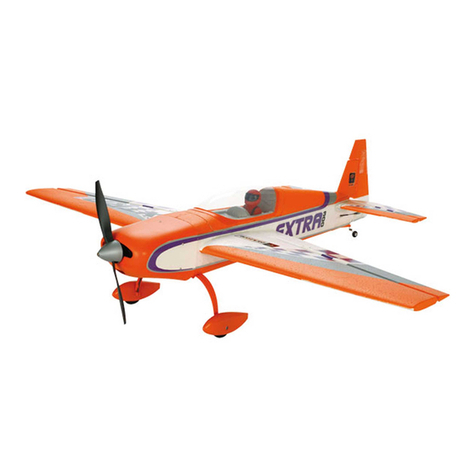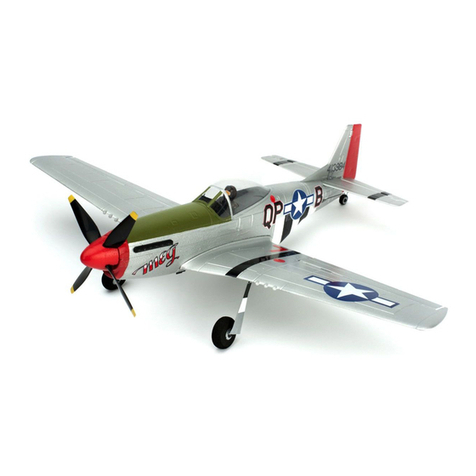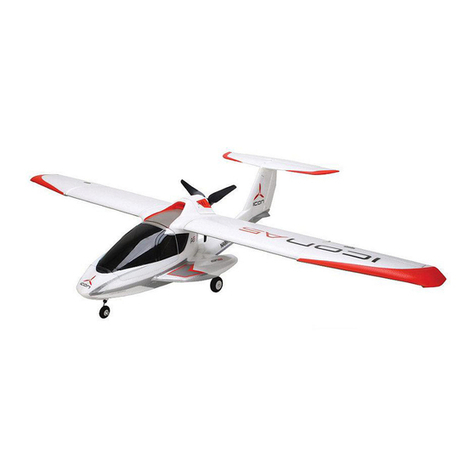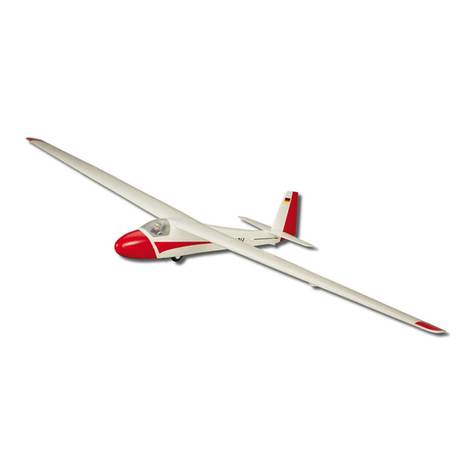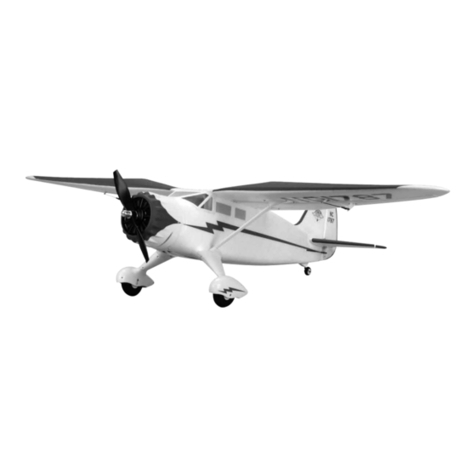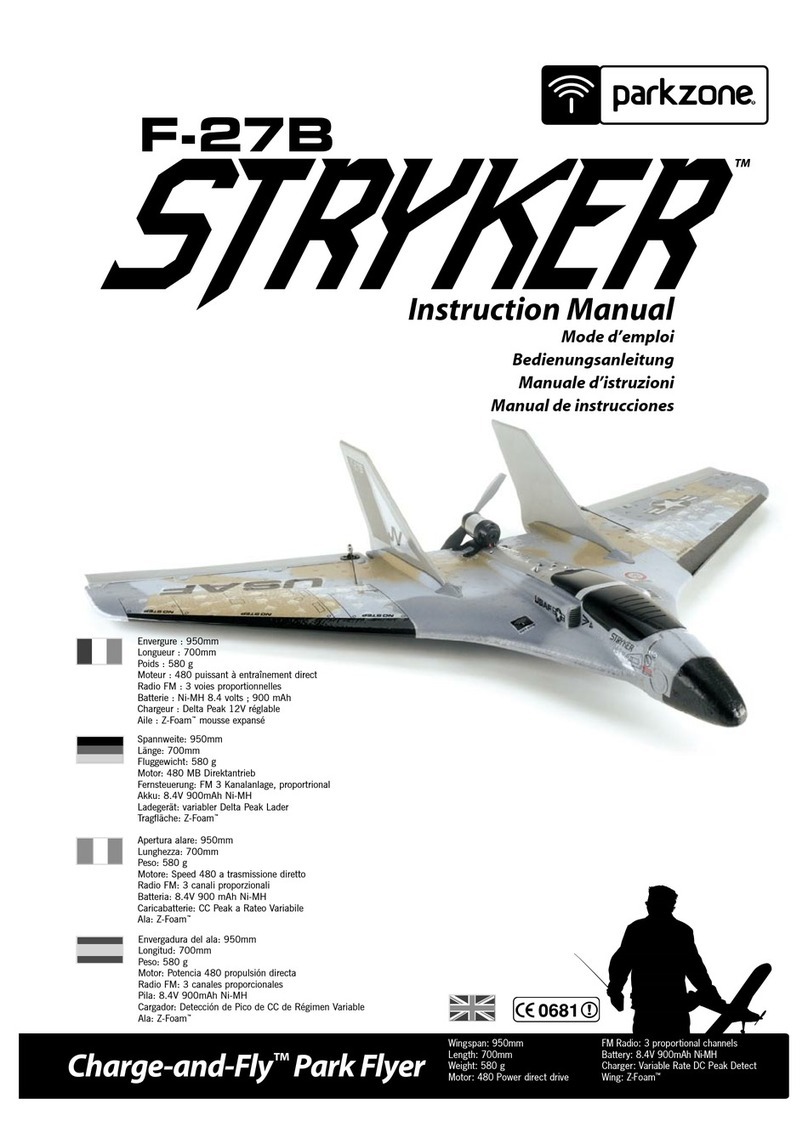7
Warnings and Safety
1. Read and follow this manual completely, observing
all instructions and safety directions. Otherwise,
serious injury and damage can occur.
Think safety first.
2. Keep propeller away from body parts, even when it
isn’t spinning, as it could be turned on by accident.
Beware of hair becoming entangled in the
propeller, especially while launching the
J-3 Cub BL PNP.
3. Do not fly when it’s too windy or you may lose
control and crash, causing injury or damage. Never
fly near people, vehicles, train tracks, buildings,
power lines, water, hard surfaces or trees. Never
allow any one to attempt to catch the airplane
while it’s in flight or serious injury can result.
4. Adult supervision is recommended for ages 14
and under.
5. Battery charging: Only use a battery charger
intended for use with the flight battery. Never leave
charger unattended while charging. This will help
prevent overcharging. While charging, place the
battery on a heat resistant surface. Do not lay it on
carpet or upholstery while charging.
6. Never cut into the battery charger or airplane wires
or serious injury can occur. Causing the
battery to “short out” (crossing negative and
positive bare wires) can cause fire, serious injury
and damage.
7. Hold the plane securely, and keep all body parts
away from the propeller when the flight battery
is plugged in. When you finish flying the
J-3 Cub BL PNP, always unplug the battery before
you turn off the transmitter.
8. Never fly on the same frequency as another RC
vehicle in your area. The frequency of the
J-3 Cub BL PNP is shown on stickers on the back of
the transmitter.
Before first use, please refer to Chart A for BEC usage
and input voltage/cell count guidelines. You must
follow these guidelines for safe operation. If you are
using four servos with higher current draw, or more
than four servos for a quad flap option (for example),
you will need to disable the BEC. If you wish to disable
the BEC, you must remove the red receiver wire lead
and connector from the receiver lead housing, and
then insulate it properly to prevent shorting.
When operating with the BEC disabled, E-flite
recommends the use of a separate, high power,
external, BEC (like the Ultimate BEC), or receiver
pack and switch using the following items to ensure
trouble-free operation:
1. Expert 720mAh Ni-MH 4.8V receiver battery
(EXRB100), or similar
2. Expert Standard Switch (EXRA050), or similar
PLEASE READ THESE INSTRUCTIONS
IN THEIR ENTIRETY BEFORE USE
Before you connect your ESC and begin flying, take
a moment to look it over. The input power side has a
black (negative) and red (positive) wire along with a
female JST Connector. The motor side has three, 2mm
female gold bullet connectors.
The black and red wires with the female JST connector
will connect to your power battery. The red wire
connects to the red wire on your battery pack, the
black wire to the black wire on your battery pack. If
the wires are reversed, the ESC may be damaged. YOU
MUST ENSURE THAT YOU CONNECT THE BATTERY
POLARITY PROPERLY TO PREVENT DAMAGE TO
THE ESC. Reversing polarity will void your warranty, so
always double-check this connection. You may need to
solder a male JST Connector (EFLA242) to the battery
so it matches this speed control. The throttle lead
connects to the throttle channel on your radio receiver.
WARNING: For your safety, when checking the
startup function of the ESC or making programming
changes, please remove the propeller to prevent any
potential injury. You should always treat the motor
and propeller as live and dangerous,
remembering that it could start at any time, and
keep any body parts, clothing and tools clear of the
propeller arc. NEVER LEAVE THE BATTERY
CONNECTED WHEN NOT FLYING THE AIRCRAFT AND
ALWAYS REMOVE THE BATTERY FROM THE MODEL
Features:
• Up to 10 amps continuous current with proper
air flow
• Programmable motor braking
• Safe power-arm mode prevents accidental starts
• Programmable low voltage cutoff with settings
for 2-cell Li-Po (6V), 3-cell Li-Po (9V) or 70% of
battery starting voltage
• Programmable throttle input range
(1.1ms–1.9ms or Auto Select)
• Soft start
• Auto motor shut down if signal is lost or there is
interference
• Programmable timing—2 user selectable ranges
for use with a large variety of brushless motors
• Pre-wired connectors—JST on battery input and
2mm female gold bullets on motor output leads
Programming the
E-flite 10A Pro Brushless ESC
The E-flite® 10A Pro Brushless ESC controller
has been designed for use in radio control
aircraft and to support continuous currents of up
to 10 amps when using 2- to 3- cell Li-Po battery
packs and up to four submicro servos. Standard
features include advance BEC and safe power
arming along with programmable features such
as low voltage cutoff, braking, timing, and throttle
input range.
Servo Ratings with BEC Enabled:
Cell High Torque Standard Sub-Micro
Servos Servos Servos
6 - 8 Ni-Cd/NiMH 3 4 4**
9 - 10 Ni-Cd/NiMH 2 3 4**
2 Li-Po 3 4 4**
3 Li-Po 2 3 4**
Chart A
BEFORE CHARGING AND WHEN
FINISHED FLYING.
When flying in hot weather, we recommend checking
on the condition of the ESC, battery, and motor after
each flight, and you may want to consider letting the
electronic components cool to near ambient
temperature between flights.
We also recommend throttle management when
running near maximum levels of current draw. It is
not recommended that you fly an entire flight at full
throttle. If this is done, it is possible to cause
permanent damage to your motor, battery, and ESC.
Using Your 10-Amp Pro Brushless Controller:
This controller is very simple to use, and for safety, will
not arm the motor until the throttle stick has been
held in the Idle/OFF position for more than 1 second.
The controller will indicate the soft cutoff voltage
setting every time you plug the battery in by first
emitting a low, long tone, to show startup. You will
then hear 2 (for 2-cell Li-Po) or 3 (for 3-cell Li-Po)
medium length, mid tones to indicate the cell count
(or 7 beeps if 70% Smart Cut is selected), helping you
to confirm the setting before every flight.
Connecting the ESC to the Motor:
The three wires from your motor connect to the three
female gold bullet connectors on the ESC. The order
of connection to the motor is not important; you can
plug any motor wire into any connector. If, when you
test the system, the motor runs backwards you can
simply unplug and switch any two of the motor wire
plugs connected to the ESC.
Mounting the ESC:
Choose a location that has good airflow and
offers good protection.
The plastic case area next to the small BEC heat sink is
designed to accept Velcro or 2-sided tape. Do not
cover the heat sinks as this will greatly reduce their
effectiveness.
Mount the ESC with a combination of Velcro,
2-sided foam tape, and/or tie wraps.
Starting Your Power System:
1. Turn on your transmitter and ensure the
position of the throttle stick is set to Idle/Off.
Specifications:
• Continuous Current: 10A
• Max Burst Current: 12A (15 sec)
• Length: 30mm (1.2 in)
• Width: 17.5mm (.7 in)
• Height: 10mm (.4 in)
• Weight: 10 g (.35 oz)
• Cells: 2-3S Li-Po or 6-10 Ni-MH/Ni-Cd
• Battery Input Leads: 20 AWG with JST Connector
• Motor Output Leads: 20 AWG with 2mm Female Gold
Bullet Connectors
** Sub-Micro Servos tested 4 at a time include E-flite S-60, and
S-75, JR 241, and ParkZone 3W servo.Some other brands of
servos have significantly higher current draw. Digital sub-micro
servos, micro, and mini-servos have higher current draw, use the
'standard servos' column. Always be sure to position the ESC for
maximum airflow since cooling can significantly aid in the
performance of the BEC.
